

We mostly cover tabletop games from Games Workshop here on Age of Miniatures, but for the last couple of years, one non-GW tabletop skirmish game has stood out from the rest as a force to be reckoned with.
Atomic Mass Games‘ Marvel Crisis Protocol has conjured up the perfect storm for success as a miniature skirmish game.
It has great easy-to-learn-hard-to-master rules which are mostly available for free online, excellent miniatures on plastic sprues of near-Games Workshop quality and detail, a breakneck speed rollout of new releases and that one thing most other pretenders to the skirmish game throne has been unable to beat Games Workshop on: a world famous setting that’s full of interesting characters and inspiration for endless expansions.
It’s also really, really fun to play for beginners who are primarily Marvel fans as well as for grizzled tabletop veterans.
In this guide, we take you through the basics of how to play Marvel Crisis Protocol, what makes the game so unique, and what you need to get started playing the game.
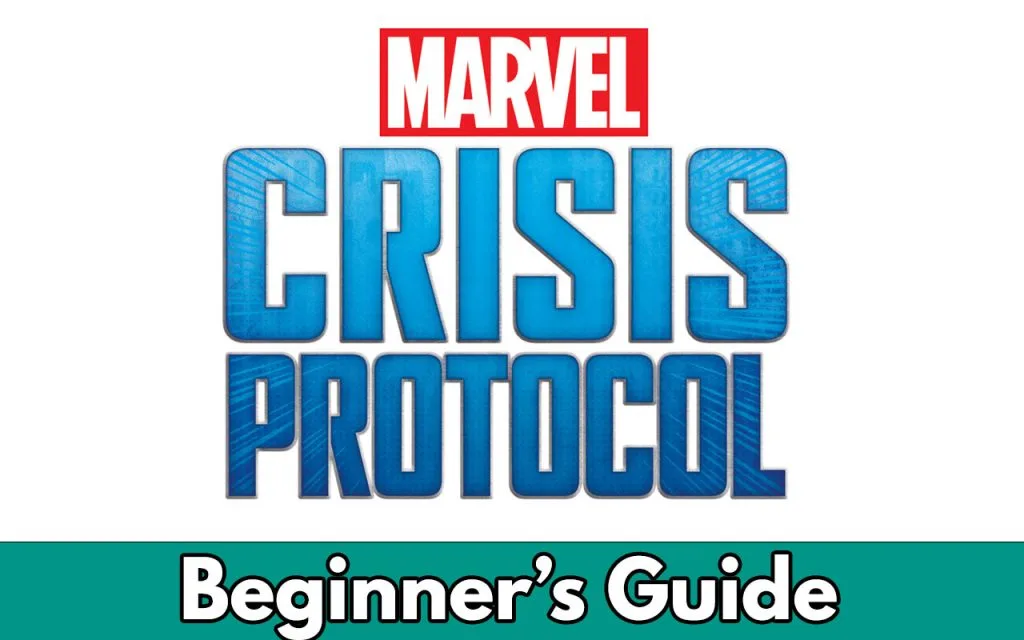
The first thing that grabs most people’s attention about Marvel Crisis Protocol is, of course, that it’s based on what is probably the most well-known intellectual property in popular culture today: The Marvel superhero universe.
Instead of fielding robots, space marines, orks or wizards, your team in this game consists of mighty, superpowered heroes and/or villains that you’ve probably seen before in a movie, in a comic book or on the top of your kid’s lunch box.
You can buy, paint and play as Iron Man, Captain America, Black Widow, Hulk, Ultron or basically any other character you can imagine from the Marvel Cinematic Universe, but the game also draws heavily upon Marvel comic books, so you can even play as more obscure characters such as the villain The Hood, Kraven the Hunter from Spider-Man, Black Swan and more, as the game is updated with new releases constantly.
This makes Marvel Crisis Protocol an excellent game for tabletop players who would like to play games with their non-gamer friends or family, whom they know would never go anywhere near a space marine or a fantasy dwarf – the recognisability of the game’s setting is a big plus.
Skirmish games based on big IPs have tried and failed before, but Marvel Crisis Protocol succeeds because it combines the great setting with a great rule set where every model on the board counts:
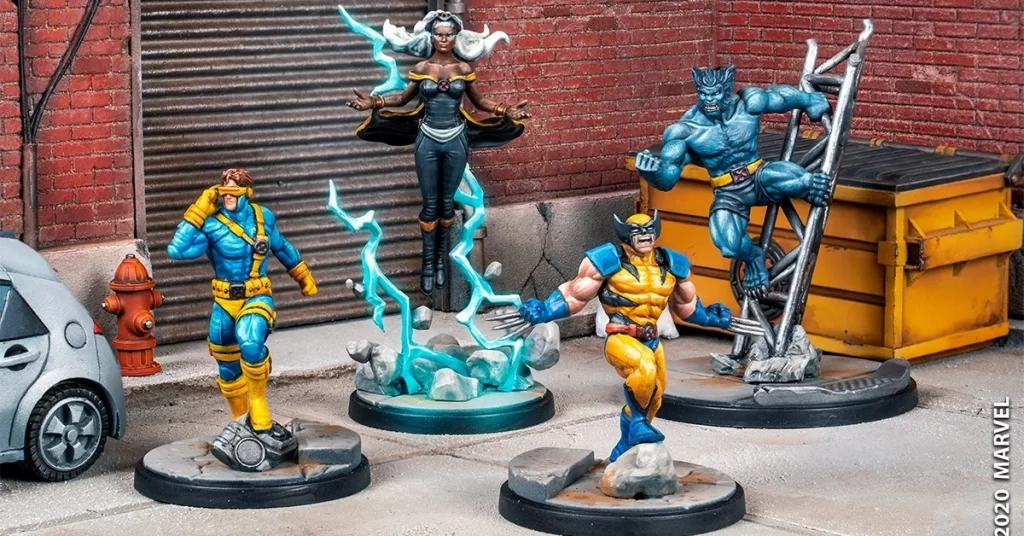
Instead of having a team of 10 soldiers with slightly different loadouts and abilities, each model on your Crisis Protocol team is a very distinct character with its own unique rules (with surprisingly little overlap between characters) and a deep backstory of alliances and feuds with other characters on the board.
The rules also do a great job of simulating the experience of superheroes engaged in epic battles, especially because of one brilliant rule:
The energy points that you spend on your superhero abilities mostly comes from taking and dealing damage, which means that the game grows wilder and more intense as the battle progresses, and that you always have an incentive to get within fighting distance of your opponent. This makes for a very cinematic game where it’s very rare that nothing happens during an activation.
We’ve already stated that the models are fantastic, and that is of course a big part of what makes the game special, but the thing about the way the game is being rolled out that’s most different from Games Workshop games is that the game’s rules are really easy to access.
There is no core rulebook that you have to buy, and no expansion books required to stay up to date.
The game simply has a Core Rules pdf available here on its website, and a bunch of FAQ documents, rules expansions and even updated character and tactics cards available for free here as well. When you buy a new character (they mostly come in packages of one or two characters), the rules for playing that character are on a stat card in that box – and that’s basically it.
On top of this being much more affordable for the customer (which is good, because the models themselves are pretty expensive), this also makes it super easy for Atomic Mass Games to react to imbalances in the competitive scene for the game by releasing updates, which is something they have already done, but they’re also being careful not to release updates all the time so that the game becomes impossible to keep up with.
The only drawback, compared to GW games, is the almost complete lack of customizability. Your characters are your characters, and the only way you can really modify their rules is by choosing which affiliation you bring them in, and what tactics cards you bring.
The models themselves are what they are, and apart from the paint job, your opponent’s Iron Man will look largely the same as your own.
Finally, a potential drawback, depending on how you build your models for other skirmish games, is that a full roster of 10 characters for playing Marvel Crisis Protocol can be a lot more expensive to buy than, for example, a box of space marines for a Kill Team game.
Other than that, Marvel Crisis Protocol has a lot in common with GW skirmish games:
It also has a huge inexhaustable well of story material to draw upon, it’s rules are both fun and complex, and playing a single game is much faster than playing a large scale tabletop wargame, while still retaining the complexity of one rather than becoming more like a board game.
It still requires a battle mat and some scenery, its models need assembly and paint, you measure distances, roll dice, claim objectives and score victory points – it just takes place in a less grimdark, more colorful and widely recognisable setting.

The easiest way to get started with Marvel Crisis Protocol is to buy the Core Set. It contains some scenery for the game (which is really important – more on that below), dice, the complete set of range rulers you need, tactics cards, crisis cards and the following 10 characters and their stat cards:
While this might seem like a weird combination of characters (at least on the villain side) for a Marvel fan, it’s a great bunch to get started with, since they are split into two affiliations (more on that below) that are the largest in the game, so they’re easy to add more characters to when you want to expand your collection (the heroes are in the Avengers affiliation, and the villains are in the Cabal affiliation).
But you can also field teams that are a combination of heroes and villains. In short, it’s a huge amount of build variety in one box compared to standard two-team starter sets for other games.
So yeah, the Marvel Crisis Protocol Core Set will give you everything you need to get started playing.
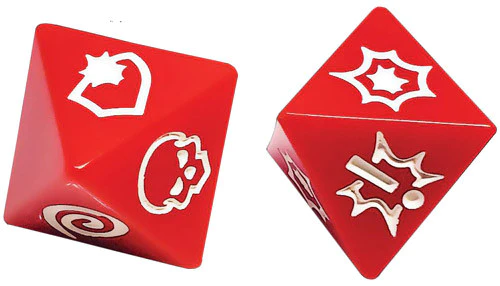
However, you don’t actually need the core set to start playing the game – bespoke dice and rulers are sold separately, and since the core rules are free online (the core set comes with a simplified how-to-play pamphlet), you can easily purchase the basics outside of the set and only invest in the characters you actually want.

The team tactics cards in the core set are great to have, but you can also get an even bigger collection in the Card Pack 2022 pack.

Once you have your core set/basic accessories and your rules, you can start thinking about what characters you want to play as.
Characters are born in character packs with the model(s) and rules required to field the character, and mostly come in packages of 1 or two. If you’re a collector by heart, the packs are all part of a numbered series, so you can keep track of whether you’ve collected them all (very comic booky-like!).

Recently, Atomic Mass Games have started releasing Affiliation Packs, which are sort of like Combat Patrol boxes for Warhammer 40K in the sense that they give you most of what you need for a specific Affiliation (the game’s factions) at a discount compared to buying the characters separately. And considering how expensive these miniatures are, this is absolutely the way to buy them to save a bit of cash.
So if you know that you want to play a specific affiliation and there’s a box available for it, it’s a great way to get started, and if there’s no box for your affiliation available yet, you might want to wait for it, since they’re being announced regularly. You can browse our overview of all the characters and affiliations in MCP.


One of the few practical annoyances about Marvel Crisis Protocol is that you’re often hauling a bunch of cards around rather than an army book, and if you lose a card or your dog/son eats half of one, you’re in trouble. For this reason alone, having a digital app for keeping track of your team’s rules is great.
Crit!Wild! (available on Google Play and the App Store) does just that, but it also contains the full rules cards for all characters, Tactics and Crisis cards! This means the app is also really good for building your knowledge of what other players might play, and for inspiration for building new teams.
There’s probably other Marvel Crisis Protocol apps out there, but Crit!Wild! is pretty fantastic (even though it’s not official).

If you’re not already a miniature painter when you pick up the game, you’ll probably want to buy some paint, primer and brushes to paint your miniatures, as well as plastic glue and clippers to assemble your miniatures.
Since the Marvel universe is full of bright colours and the miniatures for Marvel Crisis Protocol are wonderfully detailed, a really good and quick way to paint them is to spray them with a white/cream primer spray and then use Speedpaint from Army Painter, Contrast Paints from Games Workshop or similar one-coat paints to easily paint comic book-like characters.
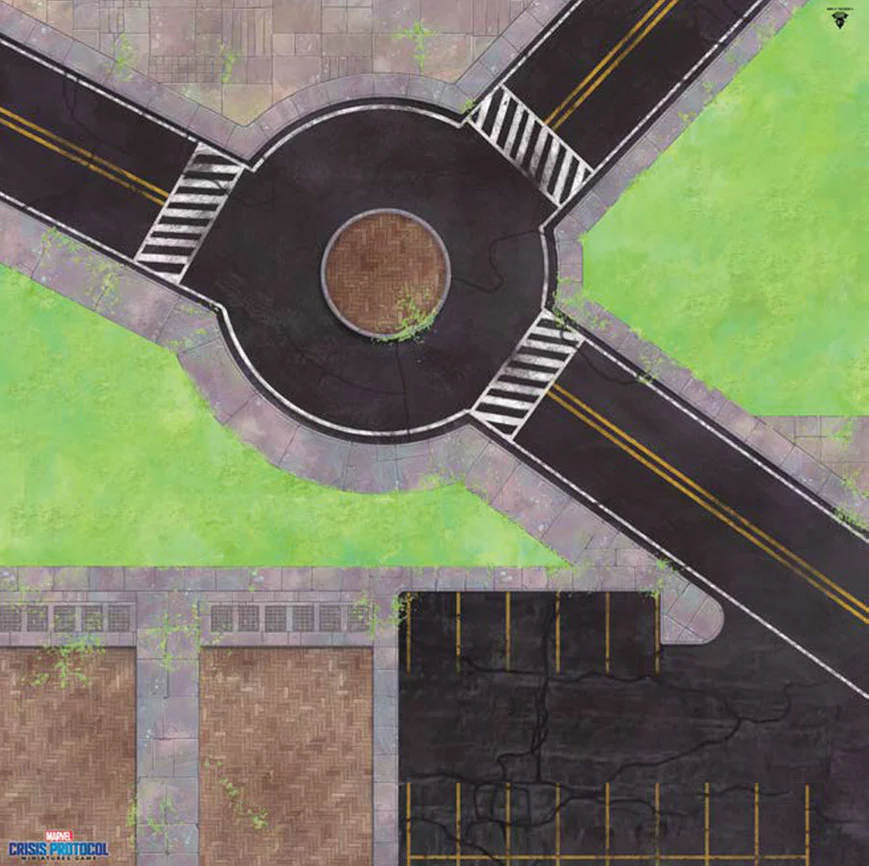
Finally, the one thing that doesn’t come with the core set is a battle mat/map. Atomic Mass Games has released a few really nice ones, but if you can find one from another company that looks city- or space-like (depending on your scenario), that’s just as good. The playing field is always 36×36 inches.
You also need some scenery, and while the scenery Atomic Mass Games releases for the game looks absolutely fantastic, it’s also very pricey, so feel free to experiment with toy cars, cardboard buildings and stuff like that.
Marvel Crisis Protocol characters are pretty close to (modern) Games Workshop models in scale, so if you have something not soaked in blood and skulls from a Warhammer game, that works as well.

Marvel Crisis Protocol is refreshingly confident about doing almost anything in its own way, but that also means that a gamer who is used to playing other skirmish games has a lot of learning and unlearning to do before they can master the game.
This section gives you a quick rundown of the most important building blocks of the game and how they work. Remember that when you’re ready to go into further detail and start playing the game, the core rules are right here.

Marvel Crisis Protocol doesn’t use pools of six-sided dice like Games Workshop games, or classic polyhedral dice like Dungeons & Dragons. Instead, the game has its own bespoke, 8-sided dice with symbols on them rather than numbers.
The symbols, which can all be seen on the image of dice above here, are:
For most rolls, you roll a number of dice specified by the ability you’re rolling for (which can be seen on your character’s stat card), and then you count the amount rolled of each symbol as well as summing up how many successes you’ve rolled (Critical, Wild and Hit/Block all count as successes).
The amount of dice you roll in a single roll rarely go a lot higher than 10. The core set only comes with 10 dice, so it makes everything easier if you buy at least an extra pack of 10 – otherwise you will often not have enough dice for an attack roll and the corresponding defence roll to be rolled with separate dice if there are any criticals involved.

Range and distance in Marvel Crisis Protocol isn’t measured with measuring tape in inches like in most Games Workshop games. Instead, the game uses two sets of measurement tools:
Using these tools is a bit fiddly to begin with – at least 10 minutes of your first game will probably be spent by you and your opponent trying to locate a specific measuring tool for their next action.
But if you keep them in different colours, they soon become second nature to use, and the way they fit bases and how all movement and abilities are built around these 8 distances means that there’s a bit less arguing over whether something is within range or not than in your average measuring tape game. It’s a good idea for both players to have their own set of measurement tools.
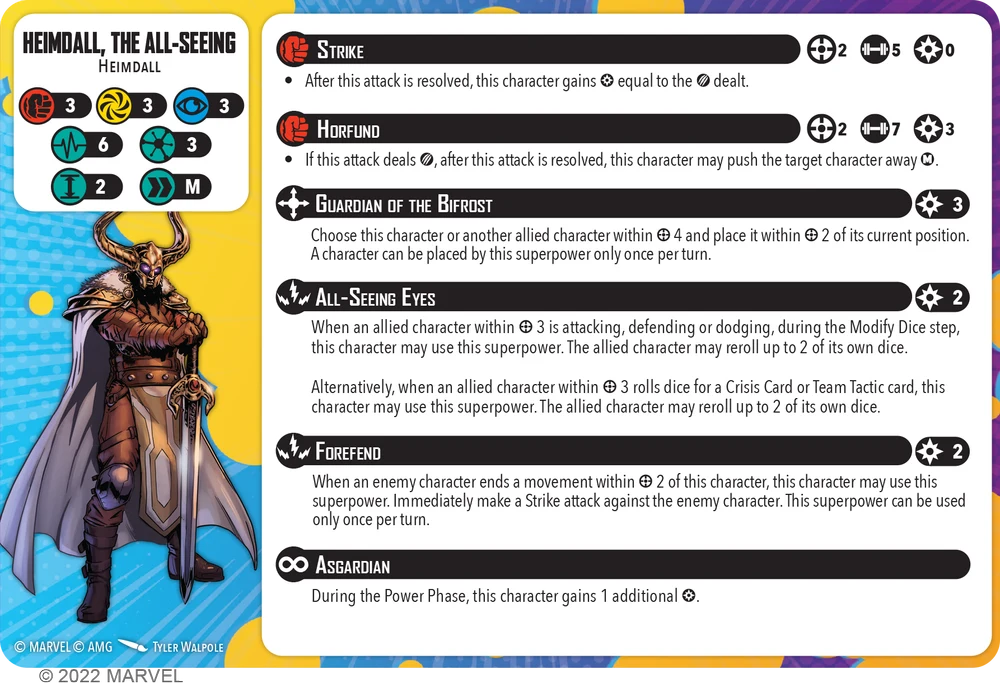
Stat Cards contain all the rules you need for knowing what each character can do. Once again, the core rules are freely available, so we’ll just cover enough of how the cards work here for you to determine whether this is a game for you.
The basic statistics of your character (on the top left side of the card) are:

On the right side of the stat card, all your powers are listed. Most of them, apart from your basic attack at the top, requires Power to be used. Power is a resource in the game, represented by the 8-pointed star, that you gain in a number of ways:
The top powers on your card are your Attacks, represented by a symbol for the type of attack (Physical, Energy or Mystic) so the opponent knows which Defense statistic to use. Each Attack has a description as well as three symbols: a crosshair for which Range tool to use for the attack, a handweight for how many dice you’re rolling for the attack, and the 8-pointed star for how much power the attack costs to use.
After your Attacks, your stat card might have Leadership powers, represented by a five-pointed star (Heimdall here doesn’t have one). Next to the name of the Leadership Power is a parenthesis containing the name of the Affiliation that it affects (see below). Leadership Powers don’t have a Power cost and are comparable to passive abilities or faction rules in other skirmish games – they’re conditions that are always in effect when your team has this specific Affiliation.
Finally, the bottom of your stat card contains your Superpowers, which are represented by one of three symbols: A cross pointing in four directions for Active powers, three lightning bolts for Reactive powers and an infinity sign for Innate powers. Active superpowers can be used during your activation when you choose to, and if the power’s rules say “Action”, it costs an action to use. Reactive superpowers have a prerequisite conditions, so that they can only be used when something specific happens, such as your character taking damage. Innate superpowers are passive abilities that are always in effect. A bunch of Innate superpowers are so common that their name is just on the character card as a keyword without description, and then you can look up their rules in Appendix E of the Core Rules (page 28). Examples of Keyword Innate Superpowers could be Flight or Immunity to a specific condition.
Some powers can apply Special Conditions to targets, such as Bleed, Poison or Stun, and all these are explained in appendix B on page 26 of the Core Rules.
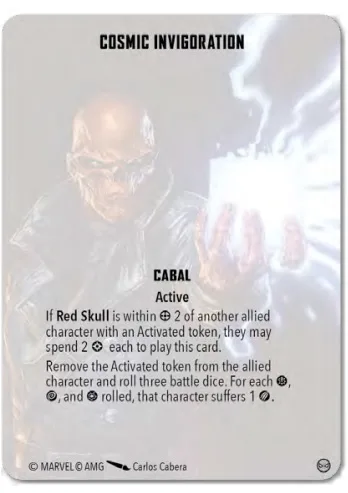
Alongside your characters, you also bring Team Tactics cards to a game. These can generally be understood as single-use superpowers that aren’t on you character card, in that they can only be used once per game, but it otherwise uses the same rules language and symbols as the powers on your character cards.
Some Team Tactics can be used by any team, but certain cards require your squad to have a specific Affiliation, such Cosmic Invigoration pictured above, where it says “Cabal” in the middle of the card.
An affiliation is a bit like a faction or an allegiance in other tabletop skirmish games, but it differs from those in one important way: There is an official list of affiliations here, listing which characters can be in each affiliation, but when you pick an affiliation for your squad before a game starts, only more than half of your characters have to be listed under that affiliation. So you can pick a squad of mostly Guardians of the Galaxy characters, but then also add a supervillain from a completely different affiliation to that if you have an idea for making that work in the game.
All the characters in your squad will benefit from the affiliation you choose (meaning you can use Team Tactics Cards with that affiliation for them. It also means all the characters in your squad benefit from the Leadership ability one of your characters with the right affiliation has. For example, Captain America – Steve Rogers has a Leadership ability called A Day Unlike Any Other that affects the Avengers affiliation and reduces the Power Cost of the first superpower used each turn by each of your characters. The Avengers affiliation and many other affiliations feature multiple characters with Leadership abilities, but in each game, you can only choose one of them to be active.
While the basics of affiliations are pretty easy to learn (more than half of your characters must belong to one for it to be selectable, only one Leadership ability active per squad) the implications of using them and figuring out which characters synergize well is where a large part of the depth of Marvel Crisis Protocol rules lies. An important thing to note is that there is one exception to the rule of all the bonuses from an affiliation affecting everyone in your squad: some abilities might affect a specific affiliation with a keyword (such as “use this when an Avengers character does X”) – those abilities only affect those members of your squad who are actually on your affiliation’s list.
Finally, remember that affiliations are optional. You don’t have to pick one.
In Marvel Crisis Protocol, you have a roster from which you pick the characters and cards you want to use in a game. Your roster consists of 10 characters, 10 Team Tactics cards and 6 Crisis Cards, three of each of the two kinds.
Figuring out what the best combination of characters, Team Tactics cards and Crisis Cards to put in your roster is something that you can get completely lost in, and something that fuels the existence of Marvel Crisis Protocol as a a competitive game, as top players around the world test new combos against each other in tournaments, but as a beginner, it’s completely fine to just bring characters you like the look of, Team Tactics cards from the starter set or the Character Packs you’ve bought, and Crisis Cards you think look fun to play.
One thing to keep in mind, of course, is the Affiliations discussed in the section above – not only because they are essential to the game, but also because they can guide you in picking characters and cards that work well together.
One final thing you can take in your roster is Infinity Gems. These are special cards that can only be carried by characters with the Gem Bearer superpower, so if you don’t have one of those, you don’t have to worry about them – just remember that if you do want to use them, they have to be in your roster.
Like in games such as Kill Team, the Roster in Marvel Crisis Protocol is a really nice system that gives you a kind of side board when goin to tournaments or playing games against your friends, so that the game lands in a comfortable place between requiring you to play the same list in every battle and just fielding random stuff: You have 10 specific characters to choose from in each game, but you can switch up which of them to play every time you set up a game.
Keep in mind that all types of cards in the game are updated whenever there’s a need for it, so make sure to check the game’s website or your list-building app for the latest version of the character cards and Team Tactics you want to have in your roster.
Know that you know the most basic rules found on your cards and how they interact with each other (there is still a lot we didn’t cover, but nothing that’s not easily understood from reading the core rules), you’re ready to set up a game. There are a few different ways to play Marvel Crisis Protocol (see the section after this one), but the standard way follows this structure:
Page 9-10 of the Core Rules has a all the details on this, but basically, you set up a battlefield that’s 36 by 36 inches, with a good mixture of small and large pieces of terrain. Official terrain for the game have different sizes printed on them, and the rules details how many of each size you should place on your battlefield. If you’re using your own custom made terrain, just make sure there’s stuff to throw around and stuff to break line of sight.
Each player rolls five dice, and the player with the most wilds, hits and criticals gets to activate first.

each player has six Crisis cards for building missions – 3 Secure cards and 3 Extraction cards. Each player picks one of the two categories and draws a random card from that deck. The other player picks a random card from their own deck of the opposite category, so that there is one Secure card and one Extraction card on the table. Each card has a title, a setup condition which is what kinds of tokens you have to place on the battlefield, a scoring condition that tells you what you have to do to score victory points from it, an Interact action that you can do near the objectives (but doesn’t cost an Action), and finally, a Maximum Threat Level in the middle of the circle at the top.
Maximum Threat Level determines how many characters you can field in a game – the sum of the Threat Level on all the character cards of your squad can’t be higher than the Maximum Threat Level for the mission you’re playing. Since a mission is made up of two Crisis cards, each with their own Maximum Threat Level, the player who didn’t win priority at the beginning of your setup determines which of the two Maximum Threat Level values will be in effect for the game.
Then the same player select an edge of the battlefield where they will deploy their characters, and the player with priority chooses the opposite edge of the board.
Finally, each player sets up the part of the mission that’s determined by their Crisis card by placing tokens on the battlefield.
This approach to setting up the game has some similarities with other skirmish games, such as Warcry, where mission objectives are also drawn from a deck of cards, but the way Marvel Crisis Protocol manages to build the missions into each player’s roster and build points limits into those mission cards is pretty unique, and gives players a way to think about strategy within a part of skirmish gaming that’s often just a formality.
Finally, the players take turn deploying one of their characters within Range 3 of their edge of the board until all characters are deployed. Then, the game is ready to begin. They can only deploy as many characters as the Maximum Threat Level allows.
Each round in the game (a game last for 6 rounds) goes like this:
The Power Phase is simply, but very important to remember, even when playing your first games: All the characters in the game gain 1 Power, and all effects whose rules state that they happen in the Power Phase take effect. Note that some characters, such as Hulk, gain more than 1 Power in each Power Phase.
The Activation Phase is basically where the actual playing of the game takes place: In this phase, players take turn to activate one of their characters. A character can perform two actions in an activation. An action is usually either a Move (according to the Speed of your character), an Attack (the top powers on your character card), a Superpower which requires an action, and, finally a Shake action which removes a special condition such as Stun from your character. This is a part of the game that will be immediately familiar to anyone who has played skirmish games before, but if you haven’t, it’s an engaging and interactive way to play, since you’re always just a maximum of two enemy actions away from getting to react with one of your own characters, resulting in a fun back and forth playstyle.
There are so many rules and mechanics that are in play in this phase, and the best way of learning them is to read your character cards well and consult the Core Rules for details that we can’t explain better here anyway (and the rules are free!), but the way an Attack action works deserves a mention:
In the Activation Phase, you can also play as many of your Team Tactics Cards as you want.
The Cleanup Phase does pretty much what its name says: everything that needs to be settled before a new round can start happens here. You score Victory Points (which are tracked on a small Mission Tracker that comes with the starter set, Dazed characters remove their wound markers and turn their character cards to their Injured side (see above), the players change who has Priority to the player who didn’t in the round that has just ended, and then the Round token on the Mission Tracker just mentioned is moved one step forward. Then, the next Power Phase begins.
The game ends when one player has scored 16 Victory Points, or when 6 rounds have been played, in which case the player with the most Victory Points wins. If there’s a tie, the game keeps going until one player scores more Victory Points.
This, in all it’s relative simplicity, is how a standard game works, and if that sounds like something for you, it’s easy to get started by downloading the Core Rules and building a roster.
While the standard way of playing Marvel Crisis Protocol is designed to provide a high degree of replayability, especially if you keep varying your roster with new characters or you have a gaming community with many different opponents, but sooner or later, you might find it fun to try playing the game in a different way. While the game doesn’t have a flexible campaign mode in the Games Workshop sense or like a game such as Frostgrave, it does have a few alternate game modes that radically changes how the game works, and all of them are available as free downloads on the game’s website here.
There are currently 5 different alternate game modes available on the game’s website:
Marvel Crisis Protocol has already made a big impact on the tabletop skirmish community, but the game is still young, and the next couple of years will see the game expand with updates, new rules and tons of new characters.
Posted on Last updated: October 15, 2023